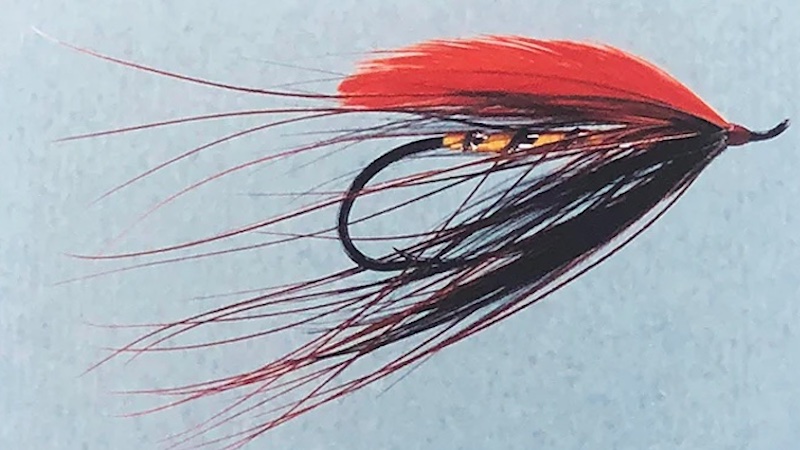
The list of anglers who designed fish-catching steelhead flies over the years is long, yet in the deep woods of Washington’s Olympic Peninsula, one angler would change the way we tie steelhead flies in the Pacific Northwest, truly elevating this pursuit from a craft to an art form. Over time, his influence would be felt the world over.
LINK (via Fly Fishing and Tying Journal)






Lovely flies. My first introduction to them was in 1992 shortly after Trey Combs’ great book, Steelhead Fly Fishing, was published, then, a year or later, the same somehow found its way onto a shelf in a Tierra del Fuego estanciero’s wife’s first floor greenhouse-conservatory that a pal, Tom Brady, and I turned into a tying room every TDF sea-trout season.
Some of those sweeping hackled, Alex Jackson Daiichi-hooked Spey flies were tied and duly sent for a swim in the waters of the upper Rio Grande, where some very good sized fish ate them in both glassy and popply shallow runs in boroad daylight.
Then we moved onto my particular interest – Yorkshire Spider flies (your “soft hackles”) made sparse and not particularly large…..
along with non strike indicator-fished, not rubberlegged bug, Nymphs I’d dreamed up, too…..
…. one of which, a season or two later, fished Frank Sawyer-style off a 6-weight floating line, caught me a 24.5-pound fresh hen sea-trout one morning, which, at luch a little later, promptly “re-triggered” a now elderly gentleman I had last fished with in Iceland in July 1982. See the Gaula thread for a mention of him (not the “big boss” featured) and what happened back then.
It takes all sorts.
Boote out.
Correction – “at lunch a little later”
PS – About those long hackles…..
They came from Rhea. Here are some on the Chilean mainland a good distance north –
https://youtu.be/oXHvBl4BpWQ?si=-WqteeVZi2sZY1uG
And one particularly that I had found freshly killed (probably by a Puma, but presently being munched by a pair of Patagonian Grey foxes) in the upper reaches of the Gallegos Chico springcreek on the Argentine-Chilean Southern Patagonian mainland border early one morning before I started trout fishing). Skinned the bird there and then, draped it over the top of a high, vertical-sided rock to dry in the sun and to be taken home several hours later for two days of washing-line drying and lots of rubbed-in coarse salt.
Roadkill tying materials with a difference. Still have a fair bit of it. Great herl for nymph bodies, too.
Found it in a large, plastic materials-container since I posted earlier; single feather propped against my laptop screen as I send this now.
Boote (and 28 years dead Darwin’s Rhea) out.
A few days later.
Speaking of Darwin’s Rhea…..
A very interesting Charles Darwin and Patagonia and TDF article in today’s Guardian –
https://www.theguardian.com/global-development/2023/dec/21/darwin-in-patagonia-tracing-the-naturalists-route-around-south-america
Hate to admit it, but I have been to pretty well all of the places pictured and, in many cases, when the water there was worth a chuck, fished them (tip: the steelhead probably don’t reach the (hellhole tourist trap) El Calafate glacier at the very top of the mighty Rio Santa Cruz, but they do the many long miles from its Atlantic mouth reaches of river further down – flashy Tubes, rubberlegs Buggers, Leeches and Intruders water, with one take to, oh, about a gazillion casts).
Far away and long ago, as the later than Darwin, fine Anglo-Argentine naturalist, W.H. Hudson, titled one of his books.
Boote out.